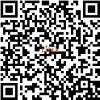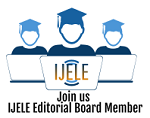(2) Heri Retnawati
(3) Caly Setiawan
(4) Zalik Nuryana
(5) Rosid Bahar
(6) Alfred Irambona
*corresponding author
AbstractThe study aims at uncovering the factors that influence the early productivity of lecturers in writing scientific articles. The main problem under review is how the early writing experience shapes the continuity of academic productivity. In conducting the study, the qualitative approach of Grounded Theory was used with the data gathered from in-depth interviews with 18 lecturers throughout Indonesia. The research participants were purposively selected and were interviewed in stages by means of theoretical sampling. Then, the data were analyzed by using ATLAS.ti, and the data validity was tested by using method and theory triangulation. The results of the study show that publication productivity does not take place naturally but is shaped through social intervention, personal strategy, technology mastery, academic literacy, reading habit, and target stipulation. These results highlight the need to foster a supportive academic ecosystem to sustain lecturers’ writing productivity over time.
Keywordswriting productivity; lecturers; scholarly publication; Grounded Theory; social intervention
|
DOIhttps://doi.org/10.31763/ijele.v6i3.1992 |
Article metrics10.31763/ijele.v6i3.1992 Abstract views : 190 | PDF views : 50 |
Cite |
Full Text Download Download
|
References
[1] T. Hasan, “Analisis publikasi ilmiah dosen terindeks Scopus pada Fakultas Keperawatan Universitas Riau Tahun 2011-2022,†Media Pustak., vol. 29, no. 3, pp. 228–240, Jan. 2023, doi: 10.37014/medpus.v29i3.3236.
[2] J. Siregar and H. Sihotang, “Writing as an investment to fulfill an increase in the functional position of lecturer,†Maneggio, vol. 1, no. 5, pp. 30–37, Oct. 2024, doi: 10.62872/e3mb1882.
[3] O. Osayomwanbor, “Research output and effective teaching: A scholarly discourse on lecturer productivity in tertiary institutions,†Int. J. Res. Appl. Sci. Eng. Technol., vol. 12, no. 12, pp. 591–596, Dec. 2024, doi: 10.22214/ijraset.2024.65649.
[4] S. Syarifuddin, “Analisis kesiapan guru dalam penulisan dan publikasi karya tulis ilmiah,†J. Pendidik. dan Pembelajaran Indones., vol. 1, no. 1, pp. 49–55, May 2021, doi: 10.53299/jppi.v1i1.21.
[5] S. Syahlan and S. A. Matondang, “Meningkatkan kemampuan publikasi dosen melalui pendampingan penulisan karya ilmiah,†J. Educ. All Media Inf. Ilm. Bid. Pendidik. Luar Sekol., vol. 10, no. 1, p. 11, Feb. 2022, doi: 10.24114/jefa.v10i1.16296.
[6] C. Dewi, “Edukasi proses publikasi artikel ilmiah pada jurnal internasional bereputasi,†J. Pelayanan dan Pengabdi. Masy., vol. 8, no. 4, pp. 318–326, Oct. 2024, doi: 10.52643/pamas.v8i4.2655.
[7] M. Uyun, “Improving lecturers’ competence in writing nationally accredited scientific papers,†Community Empower., vol. 8, no. 4, pp. 472–479, Apr. 2023, doi: 10.31603/ce.8918.
[8] C. Dewi, H. Kuswoyo, and A. Ridho, “Assistance of scientific work writing for lecturers in LLDikti Environment Region 2 (Muhammadiyah University Bangka Belitung),†J. Pengabdi. dan Pemberdaya. Masy. Indones., vol. 1, no. 9, pp. 361–367, Nov. 2021, doi: 10.59247/jppmi.v1i9.42.
[9] J. Juliastuti, S. Suherman, and A. Hasani, “An analysis of factors affecting lecturer productivity in producing scientific work,†Proceeding Int. Conf. Educ. Sharia, vol. 1, pp. 653–662, Aug. 2024, doi: 10.62097/ices.v124.103.
[10] D. Andriani, D. Purwana, and D. Susita, “Analysis of factors that effect lecturer productivity producing international scientific article in private university: Motivation as a moderating variable,†IJHCM (International J. Hum. Cap. Manag., vol. 4, no. 1, pp. 87–107, Jun. 2020, doi: 10.21009/IJHCM.04.01.08.
[11] H. Harahap, D. Andriani, D. P. ES., and D. D. Susita, “Key factors affecting lecturer productivity to conduct research,†Int. J. Sci. Res. Manag., vol. 8, no. 07, pp. 433–454, Jul. 2020, doi: 10.18535/ijsrm/v8i07.sh01.
[12] A. Halim, G. M. T. Supit, I. M. S. Raharja, and S. Ramadhan, “Pengaruh keyakinan epistemologi dan efikasi diri terhadap kecemasan dalam menulis jurnal ilmiah: analisa structural equation modelling,†J. Teropong Pendidik., vol. 3, no. 1, p. 27, Jul. 2024, doi: 10.19166/jtp.v3i1.7490.
[13] M. Hasyim, “Fenomena publikasi ilmiah pada komunitas peneliti muda di Jurusan Bahasa dan Sastra Arab, Fakultas Humaniora, UIN Maulana Malik Ibrahim Malang,†PEMBELAJAR J. Ilmu Pendidikan, Keguruan, dan Pembelajaran, vol. 5, no. 1, p. 55, Apr. 2021, doi: 10.26858/pembelajar.v5i1.15792.
[14] S. H. Seggie and D. A. Griffith, “What does it take to get promoted in marketing academia? understanding exceptional publication productivity in the leading marketing journals,†J. Mark., vol. 73, no. 1, pp. 122–132, Jan. 2009, doi: 10.1509/jmkg.73.1.122.
[15] C. R. Carpenter, D. C. Cone, and C. C. Sarli, “Using publication metrics to highlight academic productivity and research impact,†Acad. Emerg. Med., vol. 21, no. 10, pp. 1160–1172, Oct. 2014, doi: 10.1111/acem.12482.
[16] J. S. Moon, S. L. Summers, N. J. Waddoups, and D. A. Wood, “Publication benchmarking data based on faculty promoted at the top 200 worldwide accounting research institutions,†Account. Horizons, vol. 36, no. 3, pp. 171–188, Sep. 2022, doi: 10.2308/HORIZONS-2021-023.
[17] A. Ranjan et al., “Competing for impact and prestige: Deciphering the ‘alphabet soup’ of academic publications and faculty productivity metrics,†Int. J. Acad. Med., vol. 2, no. 2, p. 187, 2016, doi: 10.4103/2455-5568.196875.
[18] J. R. Hasselback, A. Reinstein, and E. S. Schwan, “Benchmarks for evaluating the research productivity of accounting faculty,†J. Account. Educ., vol. 18, no. 2, pp. 79–97, Mar. 2000, doi: 10.1016/S0748-5751(00)00009-9.
[19] A. Budiman, “Produktivitas dosen dalam pelaksanaan tri dharma perguruan tinggi (Studi pada Sekolah Tinggi Teknologi YBSI Tasikmalaya),†ATRABIS J. Adm. Bisnis, vol. 9, no. 1, pp. 20–31, Jul. 2023, doi: 10.38204/atrabis.v9i1.1007.
[20] S. Leo, E. W. Suryaningsih, and G. Nugraeni, “Obstacles of instructors in writing and publishing international journal articles: A study of theological schools in Indonesia,†Teach. Theol. Relig., vol. 27, no. 1–2, pp. 37–44, Mar. 2024, doi: 10.1111/teth.12666.
[21] S. Arsyad, B. K. Purwo, K. E. Sukamto, and Z. Adnan, “Factors hindering Indonesian lecturers from publishing articles in reputable international journals,†J. English as a Foreign Lang., vol. 9, no. 1, p. 42, Mar. 2019, doi: 10.23971/jefl.v9i1.982.
[22] H. Hartono, R. Arjanggi, K. Y. Nugroho, and I. A. Maerani, “Lecturers’ language problems in writing english papers for international publications,†J. Educ. Learn., vol. 13, no. 2, pp. 239–246, May 2019, doi: 10.11591/edulearn.v13i2.11438.
[23] F. Batan, R. K. Setyawati, and Y. D. Priliantari, “Efikasi diri dosen dalam menulis naskah jurnal,†J. Adm. dan Kesekretarisan, vol. 7, no. 1, pp. 110–128, Mar. 2022, doi: 10.36914/jak.v7i1.768.
[24] Amalia Nurhasanah, Aryawira Pratama, Mayang Sastra Sumardi, K. Mahmudah, Wahyuni Fitria, and Edi Rozal, “Embarking on a Researcher Career: Involvement in Writing for Publication,†J. English Educ. Teach., vol. 7, no. 4, pp. 969–989, Nov. 2023, doi: 10.33369/jeet.7.4.969-989.
[25] P. Pho and T. Tran, “Obstacles to scholarly publishing in the social sciences and humanities: A case study of Vietnamese Scholars,†Publications, vol. 4, no. 3, p. 19, Jun. 2016, doi: 10.3390/publications4030019.
[26] J. M. Corbin and A. Strauss, “Grounded theory research: Procedures, canons, and evaluative criteria,†Qual. Sociol., vol. 13, no. 1, pp. 3–21, 1990, doi: 10.1007/BF00988593.
[27] J. W. Cresswell and C. N. Poth, “Five qualitative approaches to inquiry,†in Qualitative inquiry and research design: Choosing among five approaches, SAGE Publications, 2007, pp. 53–80.
[28] B. Marshall, P. Cardon, A. Poddar, and R. Fontenot, “Does Sample Size Matter in Qualitative Research?: A Review of Qualitative Interviews in is Research,†J. Comput. Inf. Syst., vol. 54, no. 1, pp. 11–22, Sep. 2013, doi: 10.1080/08874417.2013.11645667.
[29] J. M. Morse, “Determining sample size,†Qual. Health Res., vol. 10, no. 1, pp. 3–5, Jan. 2000, doi: 10.1177/104973200129118183.
[30] M. M. Archibald, R. C. Ambagtsheer, M. G. Casey, and M. Lawless, “Using zoom videoconferencing for qualitative data collection: perceptions and experiences of researchers and participants,†Int. J. Qual. Methods, vol. 18, p. 160940691987459, Jan. 2019, doi: 10.1177/1609406919874596.
[31] S. Hwang, “Utilizing qualitative data analysis software,†Soc. Sci. Comput. Rev., vol. 26, no. 4, pp. 519–527, Nov. 2008, doi: 10.1177/0894439307312485.
[32] S. Friese, Qualitative data analysis with ATLAS. ti. Sage, 2019.
[33] A. Bandura, “The explanatory and predictive scope of self-efficacy theory,†J. Soc. Clin. Psychol., vol. 4, no. 3, pp. 359–373, Sep. 1986, doi: 10.1521/jscp.1986.4.3.359.
[34] W. Littlewood, “‘Autonomy’: An anatomy and a framework,†System, vol. 24, no. 4, pp. 427–435, Dec. 1996, doi: 10.1016/S0346-251X(96)00039-5.
[35] P. Benson, “Autonomy in language teaching and learning,†Lang. Teach., vol. 40, no. 1, pp. 21–40, Jan. 2007, doi: 10.1017/S0261444806003958.
[36] A. A. Brennan and J. T. Enns, “When two heads are better than one: Interactive versus independent benefits of collaborative cognition,†Psychon. Bull. Rev., vol. 22, no. 4, pp. 1076–1082, Aug. 2015, doi: 10.3758/s13423-014-0765-4.
[37] D. Lee, Y. Huh, and C. M. Reigeluth, “Collaboration, intragroup conflict, and social skills in project-based learning,†Instr. Sci., vol. 43, no. 5, pp. 561–590, Sep. 2015, doi: 10.1007/s11251-015-9348-7.
[38] R. Ellis and F. Han, “Assessing university student collaboration in new ways,†Assess. Eval. High. Educ., vol. 46, no. 4, pp. 509–524, May 2021, doi: 10.1080/02602938.2020.1788504.
[39] J. A. Efstathiou et al., “Long-term impact of a faculty mentoring program in academic medicine,†PLoS One, vol. 13, no. 11, p. e0207634, Nov. 2018, doi: 10.1371/journal.pone.0207634.
[40] S. Dahlke, C. Raymond, T. Penconek, and N. Swaboda, “An integrative review of mentoring novice faculty to teach,†J. Nurs. Educ., vol. 60, no. 4, pp. 203–208, Apr. 2021, doi: 10.3928/01484834-20210322-04.
[41] A. K. Hund et al., “Transforming mentorship in STEM by training scientists to be better leaders,†Ecol. Evol., vol. 8, no. 20, pp. 9962–9974, Oct. 2018, doi: 10.1002/ece3.4527.
[42] L. Salisbury and G. Mattice, “Early exposure to the scientific research process through collaboration with chemistry faculty and the science librarian,†Sci. Technol. Libr., vol. 35, no. 2, pp. 119–135, Apr. 2016, doi: 10.1080/0194262X.2016.1162118.
[43] J. C. Ugrin, M. D. Odom, and J. M. Pearson, “Exploring the importance of mentoring for new scholars: A social exchange perspective,†J. Inf. Syst. Educ., vol. 19, no. 3, pp. 343–350, 2008.
[44] Z. Or, P. Allebeck, and R. Moriarty, “3.N. Skills building seminar: Publishing and disseminating your research: How to get published, and what then?,†Eur. J. Public Health, vol. 33, no. Supplement_2, Oct. 2023, doi: 10.1093/eurpub/ckad160.188.
Refbacks
- There are currently no refbacks.
Copyright (c) 2024 Syarief Fajaruddin, Heri Retnawati, Caly Setiawan, Zalik Nuryana, Rosid Bahar, Alfred Irambona

This work is licensed under a Creative Commons Attribution-ShareAlike 4.0 International License.

International Journal of Education and Learning
ISSNÂ 2684-9240
Published by Association for Scientific Computing Electronics and Engineering (ASCEE)
W : http://pubs2.ascee.org/index.php/ijele
E : zalik@ascee.org

This work is licensed under a Creative Commons Attribution-ShareAlike 4.0 International License.






















